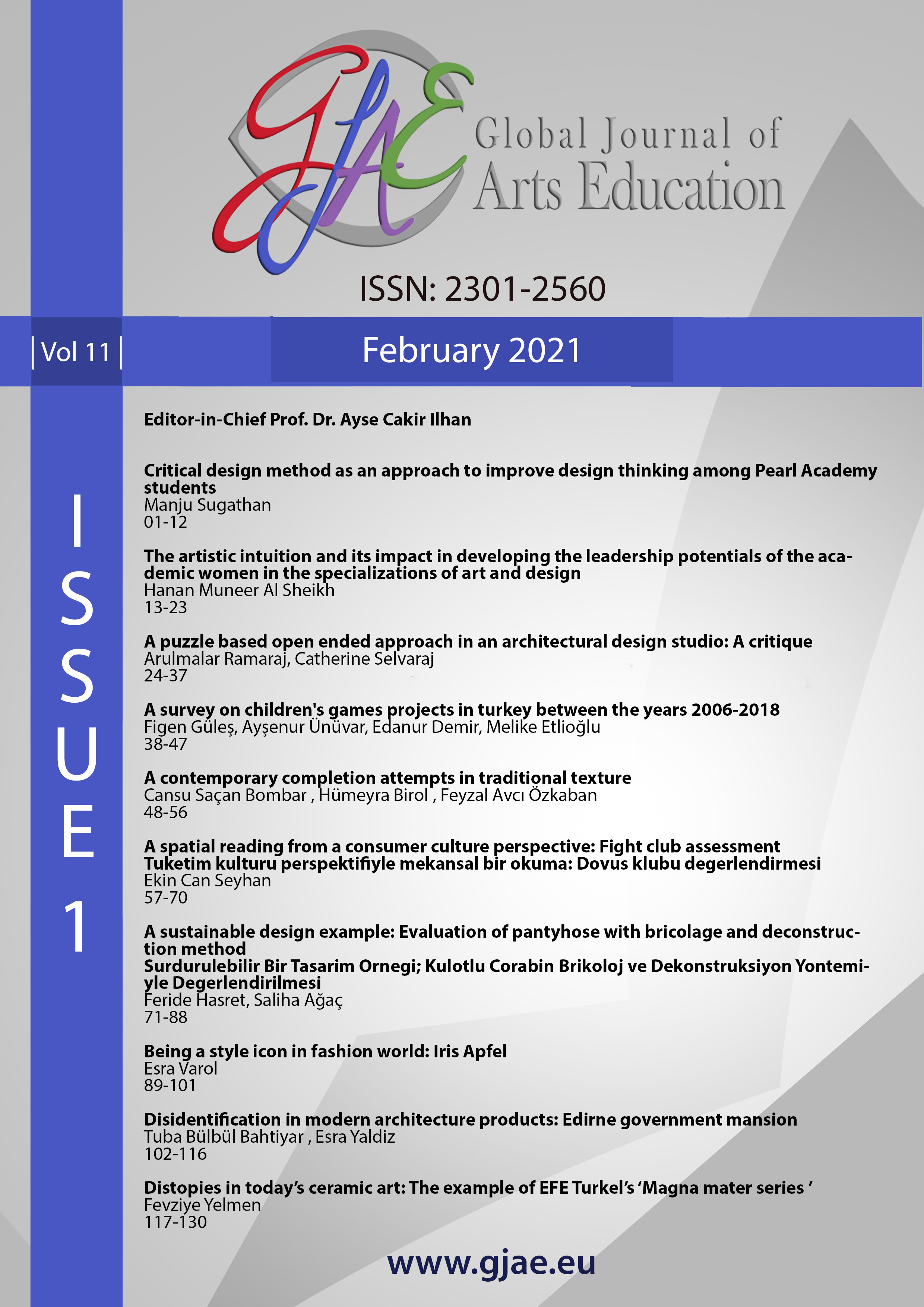A puzzle based open ended approach in an architectural design studio: A critique
Main Article Content
Abstract
Wang (2010) posited that with respect to design pedagogy in general, there is a need for radical changes to occur in design studios. Focusing on architectural design education, studies reveal that subjective knowledge and irrational creativity are dominating in architectural design studios. This is observed to be one amongst the various other outcomes as teaching methodologies without a holistic knowledge are adopted (Salama, 2016). Critical, creative and pragmatic thinking are the primary criteria in architectural design studios (Ibrahim and Utaberta, 2011). Crowther (2013) reported that design studios must facilitate learning about design, learning to design and learning to become an architect. In addition to traditional one to one studio, introduction of different models with alternate instructors through single, double and collaborative critiques at the desk, outside of studio paves new directions to pedagogy (Gamble, Dagenhar & Jarrett, 2002). Amongst the various directives like transformative design pedagogy (Hadjiyanni, 2008; Fay and Kim, 2017); signature pedagogy (Schulman, 2005; Crowther, 2013); constructivist approach (Kurt, 2011); puzzle based learning (Akin, 2008; Vijayalxmi, 2009; Ramaraj and Nagammal, 2016) which revolve around architectural education, this paper investigates an ‘open ended puzzle based approach’ adopted in an architectural design studio.
Downloads
Article Details

This work is licensed under a Creative Commons Attribution 4.0 International License.
Authors who publish with this journal agree to the following terms:
- Authors retain copyright and grant the journal right of first publication with the work simultaneously licensed under a Creative Commons Attribution License that allows others to share the work with an acknowledgement of the work's authorship and initial publication in this journal.
- Authors are able to enter into separate, additional contractual arrangements for the non-exclusive distribution of the journal's published version of the work (e.g., post it to an institutional repository or publish it in a book), with an acknowledgement of its initial publication in this journal.
- Authors are permitted and encouraged to post their work online (e.g., in institutional repositories or on their website) prior to and during the submission process, as it can lead to productive exchanges, as well as earlier and greater citation of published work (See The Effect of Open Access).

